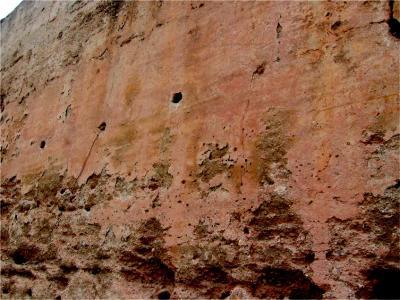In a study scheduled to appear in the Jan. 15 issue of Analytical Chemistry, scientists describe how they found these materials thanks to their new testing method.
Using a novel new method to identify the components of historical artifacts, the team found hydroxyapatite, the main component in bone pigments and animal bones, in the patina of Granada's medieval walls. Their new test is inexpensive, identifies chemicals more accurately and — most importantly — does not harm the historical artifacts.

Scientists have found a 14th century oven used to bake animal bones for the purpose of strengthening the grand medieval walls in what is today, Granada, Spain. Photo Credit:American Chemical Society
Carolina Cardell and colleagues point out that ancient decorative and protective layers, or patinas, covering the outside of very old buildings have been subject of many analyses in archaeology, conservation and chemistry. Patinas have been a popular finishing for building exteriors and walls for aesthetic and protective reasons since ancient times.
"However, the results of this work are significant for archaeologists since this is the first report of burnt bones in a patina on a Muslim monument, as well as the archaeological artifacts — the oven and raw materials — used to produce them," says Cardell.
Article: Carolina Cardell, Isabel Guerra, Julia Romero-Pastor, Giuseppe Cultrone, Alejandro Rodriguez-Navarro, 'Innovative analytical methodology combining micro-X-ray Diffraction, Scanning Electron Microscopy-based mineral maps and Diffuse Reflectance Infrared fourier Transform Spectroscopy to characterize archaeological artifacts', Anal. Chem., 2009, 81 (2), pp 604–611 DOI: 10.1021/ac8022444






Comments